Growing your own food sounds like a great idea, until you begin to count the cost. If you aren’t careful, the cost of supplies for a new garden or even an established garden can easily outweigh the gains of growing your own produce.
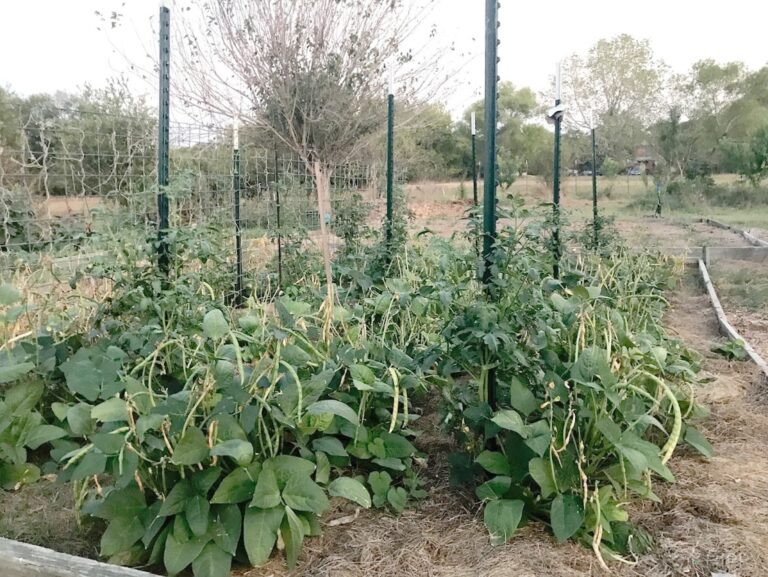
Gardening is definitely an investment in your food and your health, but it doesn’t have to break the budget. There are plenty of ways to accomplish frugal gardening that will enable you to grow your own food while saving money.
Keep reading if you want to find out how to save $2400 per year gardening and growing your own food.
Table of Contents
How Much Does a Garden Cost?
MIGardener, of the MIGardener youtube channel, gives a breakdown of the cost of his frugal backyard garden.
He spent roughly $1,050 to create the infrastructure of his garden that should last him a good five years. You can see him talk about it here:
This is his expense breakdown:
- 20 raised beds and 3 galvanized beds: $750
- Soil: $150
- Mulch: $75 for delivery
- Plants – Free to nearly free: $10 to $15 in vegetable seeds
- Fertilizer: $5 per bed
- Water: free
MIGardener spent a total of about $1050 to build his backyard garden, which should last him around five years before he needs to start replacing parts of it. He started with the cost of the raised beds.
He built the raised beds himself as inexpensively as possible. There are 20 48 square foot raised beds and 3 galvanized beds, which came to $750 out of the $1050. This breaks down to roughly .50 per square foot.
Next he filled the beds with as much soil from his existing garden as possible, and then topped it off. This came to about $10 per bed or $150. He was able to find free mulch, and only had to pay $75 for delivery.
His plants were free or were started from seeds, which cost about $10 to $15 total for the first year. Fertilizer cost about $5 per bed, or $100. Lastly, because he has a well, his water is free. These costs were all estimates.
Although he spent over $1000 getting started with this new raised bed system, he grew over $3000 worth of vegetables, for a ‘profit’ of $2000.
Next year, he will be able to reuse his infrastructure, probably only needing to add some fertilizer and maybe seeds and plants, depending on what he planted and if he saves his own seeds.
This is a great return on investment for gardening supplies, however, you may be able to create your first garden even less expensively. Here are some tips to save money on gardening that will save you money year after year.
Save Money by Planning Out Your Garden
First things first, you need to have a plan. If you don’t have a plan, you will probably have more failure in your garden than success.
So take a little time to figure out what you need to do and what you need to have to accomplish your garden plans to grow your own food.
Will you use raised beds? Will you use a greenhouse? Will you start seeds indoors? Or will you look for free and inexpensive plant sources?
You need to know what to plant, when to plant, how to plant, and how to harvest and preserve it all. If you plant vegetables that your family simply doesn’t eat, you’ll be throwing away your money and your time.
If you grow more food than you can harvest and preserve, you’ll be wasting your money and hard work. It’s best to choose the fruits and veggies that your family loves the most and concentrate on growing those.
Morningchores.com has a calculator to help you figure out exactly how many plants you will need to grow in order to feed your family.
Of the veggies that your family eats, which will grow in your area? Check your growing zone here, then you can look at seed catalogs, websites, and seed packets to see which ones will grow in your area.
Some varieties are hardier than others, so take into consideration your gardening skill and experience when choosing what to grow.
Next, look at your last frost date to know when to start planting in your garden. And check your first frost date to know when you need to have your vegetables harvested so they don’t freeze and go bad.
You’ll also need a plan to preserve that food (can you freeze it, dehydrate it, pickle it, can it, or ferment it?) so that you don’t waste money on spoiled food.
Our family loves to eat carrots, peppers, apples, spinach, lettuce, cucumbers, and avocados. Where we live, you can’t grow avocados outside, so cross those off the list.
On the other hand, the rest of those items will grow great where we live, and we can plant in the garden by around May 1st and have to harvest everything by around October 1st.
To extend the growing season even further, we can start seeds indoors or in our inexpensive hoop house to get a jumpstart on growing and be able to grow more food.
Once you have your plan in place, you can figure out exactly what you’ll need to have on hand and how to save money acquiring those items.
Save Money on Raised Beds: $750
You could create raised beds like MIGardener did, and spend around $750 to set up inexpensive ones. Or, you can be even more frugal and just use bare ground.
If you are determined to have raised beds, you could build them for free using heat treated (not chemically treated) pallets and filling in the beds with soil from another part of your yard.
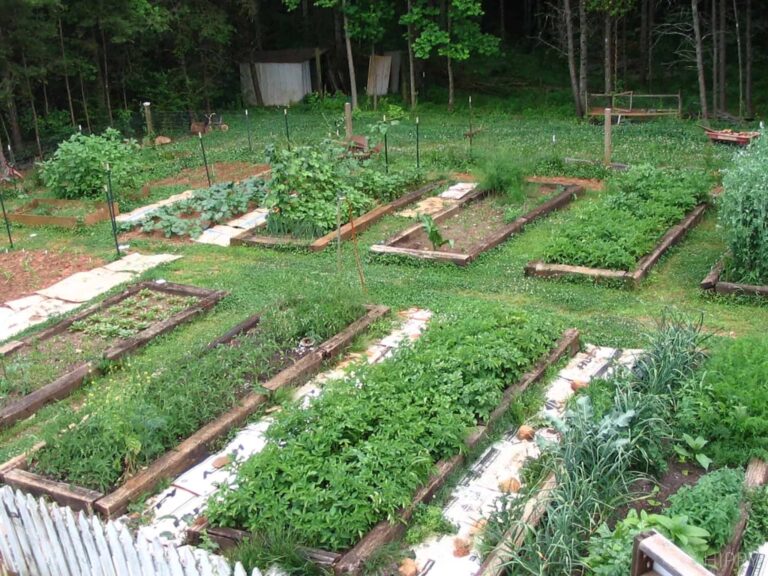
You can put some yard waste into the raised beds – such as an old rotting log – to fill up space and provide a kind of natural fertilizer for the plants you will be growing.
You could also bury some straw in the bottom of your bed as filler and as a means to retain moisture. However, over time, the straw will break down and compact and your beds will not look as full.
Save Money Preparing Your Soil. $15 and Up
One of the most critical aspects of gardening is good soil health. You will probably want to have your soil tested. DIY test kits range from $9.99 online to $14 at Lowe’s or Home Depot.
However, you can save a few dollars by sending a soil sample through your local ag extension office.
Standard soil testing in Pennsylvaia through the AG extension office costs $9.00 and covers pH, acidity, Mehlich 3 phosphorus, potassium, calcium, magnesium, and lime and fertilizer recommendations.
There are also recommendations regarding nitrogen, Mehlich 3 copper, zinc, and sulphur. Additional tests have additional fees.
This is a worthy investment, especially if you are using the soil in your backyard and not having high quality garden soil delivered to your raised beds.
Lime costs about $10 per 100 pounds, which will cover a small backyard garden. However, compost, coffee grounds, and wood ash can be acquired for free, and are great ways to adjust the pH of your soil, which will save you money on lost plants.
You can also use Epsom salts, egg shells, manure, wood chips, and many more as soil amendments. They can call be acquired inexpensively or free.
You can collect these items from friends, neighbors, and sometimes from local grocery stores and restaurants who won’t mind giving you the items in exchange for you hauling them away and saving them space in their dumpsters.
Compost is probably the best choice for soil amendments. It amends the pH, provides nutrients for your plants, and attracts worms to your garden.
You can start your own compost pile for free in your yard by mixing up yard waste and manure, turning it often, and wetting it down. If the mulch pile heats up enough, it will kill off bad bacteria and weed seeds.
If you don’t have enough to make your own mulch pile, you can ask grocery stores or farmer’s markets for their spoiled produce. They’ll likely give it to you for free since you are willing to haul it away for them.
If you don’t have space to compost it, you can dig a trench in your garden and fill it with compostable vegetables in the fall. This will give the waste time to break down, and provide nutrients for your garden.
Save Money by Using Free or Cheap Gardening Supplies
A large portion of your gardening budget will be spent on gardening supplies. Items such as weed cloth, dirt, seed starting supplies, and tools all cost money and add up quickly.
Once you figure out what you need, you’ll be able to try to find some of these items for cheap or free.
Weed Control. Save $100 and Up
Weed control can cost hundreds of dollars per month. However, weed cloth or landscape fabric can dramatically cut down on weeds, saving you money.
The lower end cost of landscape fabric and the pins to hold it down will run about $1.00 per square foot. For a small 100 square foot garden, this will cost about $100. However, you save even more money by using cardboard as weed control.
You can get cardboard for free from grocery stores, friends, or other places of business. Plain cardboard is much better than glossy.
Lay down two layers of cardboard all over your garden and overtop of any soil amendments and compost. Wet the cardboard down.
When it comes time to plant, simply cut holes in the cardboard where you would like to place your plants. Or plant first and carefully lay your cardboard down around the plants.
The cardboard will attract worms and will eventually break down and help to build up the soil in your garden. It will suppress weeds, hold in moisture, and repel some insects without costing you money.
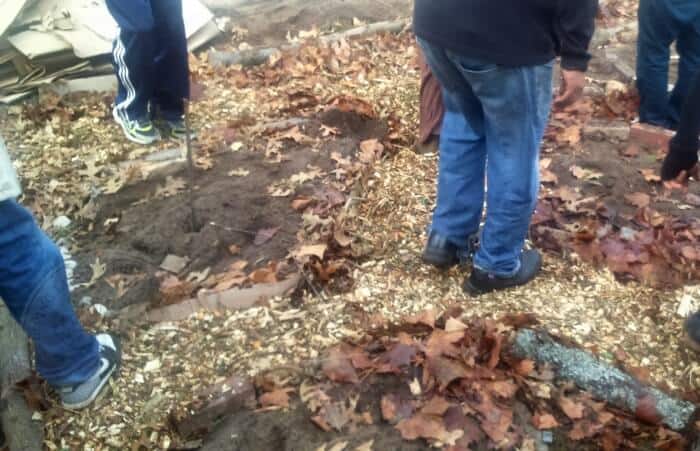
Mulch. Save $25 per Year or More
Mulch is another great way to save money on weed suppression. Mulch can get pricey at just $3.00 per bag for the lower end. However, you can get wood chips for free.
Wood chips and mulch will improve the look of your garden, suppress weeds, hold in moisture, and over time, will break down and greatly improve the quality of your soil.
You can lay down mulch or wood chips over top of landscape fabric, cardboard, or bare soil.
If you don’t want to pay for mulch, you can get it for free. Your local township office may have a mulch pile from collecting Christmas trees and yard waste and turning it into mulch as a free benefit to residents. You’ll just need to go and pick it up.
If you prefer, you could ask friends for their leftover leaves in the fall. Instead of sending them to yard waste, use them to mulch your garden.
You could do the same with grass clippings and straw. This will save you money and help your friends with their waste, as well.
Another way to get free mulch is to call local arbor companies and ask them to deliver their woodchips from tree trimming to your house.
Often times, they will give them away for free, especially if you are on one of their local routes. You may need to pay for delivery.
If this doesn’t work, purchasing a dump truck full of wood chips from your local garden supply will probably be much less expensive than purchasing small bags of mulch from your local big box stores.
Containers for Seed Starting. Save $13 and Up
Seed starting containers can be very expensive. A 72 cell seed starting tray from Lowe’s costs about $8, and the seedlings will need to be transplanted into larger containers very quickly.
Three inch Jiffy Pots cost about $2.00 for 15, and while they are supposed to break down, you will probably need to tear them a little bit when you plant them in your garden. If you are going to start 100 plants in peat pots, that would cost you $13 plus soil.
You can save money on seed starting containers by recycling any kind of containers you have lying around your house.
Good examples of items you can use to start seeds are egg cartons, milk cartons that have been cut open, coffee containers, old takeout containers, and any old cups or bowls or even jars that you no longer wish to use.
You can make free pots out of old newspaper if biodegradable containers are important to you.
Dirt Patch Heaven, on their YouTube channel recommends starting seeds in shallow cardboard boxes, and then all of the boxes can be planted in the garden as it begins to break down.
If you don’t’ have enough containers, you can search craigslist for cheap or free pots, ask friends and family for their extra pots, or purchase them very cheaply from nurseries and landscapers that are going out of business.
Heat Mats. $20 to $30 Each
Heat mats are a great way to help seeds get off to a great start. But heat mats can get expensive, as well as the cost to run them. You can save money on heat mats by starting your seeds on top of your compost bin.
If your compost bin is in a hoop house or green house, it will generate heat when taken care of properly. Not only will this heat keep your plants from freezing, it should be enough heat to help your seeds get started without a heat mat.
Save Money on Seed Starting Mix: $5 and Up
When you start seeds, you’re going to want a good quality soil to start your seeds in. To prevent fungus or damping off, you’ll most likely want to start your seeds in a sterile medium, as well. You can save money on expensive seed starting mixes by creating your own.
Choose a standard potting soil and you can sterilize it yourself by using any of the methods found here.
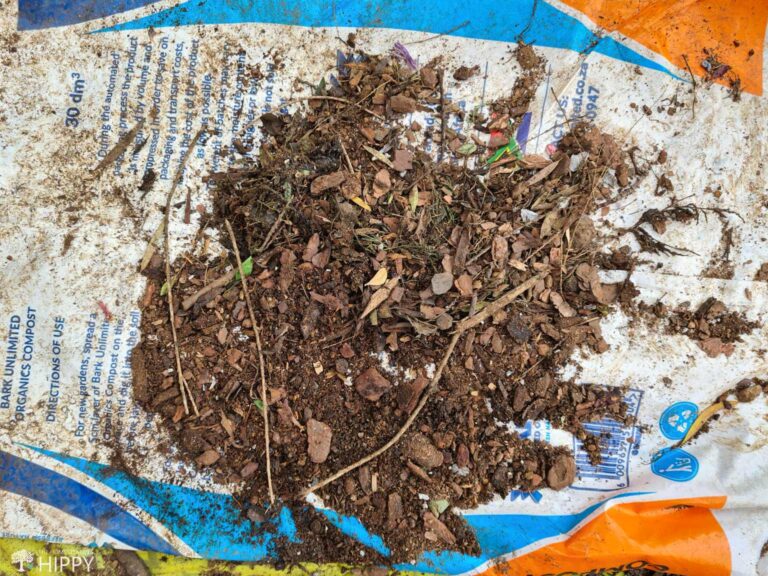
Mix in some perlite to improve drainage and make the soil lighter, and you will have a great medium to start your seeds in.
Seed starting mixes start off at about $5 per 8 quarts for the inexpensive varieties. You can create your own, better quality mix for less.
Save Money on Plants: $1000
Purchasing plants gets very expensive very quickly. A tomato plant from a nursery can cost anywhere from $5 to $20 dollars.
However, starting seeds yourself will save you hundreds of dollars on plants for your garden. If you are going to plant 100 plants, this could save you $1000 on the cost of heirloom plants.
Another way to get inexpensive plants is to ask friends for extra seeds, extra plants, or have a plant swap. This is a great way to get some extra plants or seeds at no extra cost.
You can also call nurseries, landscapers, or farms and inquire about leftover plants they can no longer sell.
Rather than throw them in the compost bin, they may be willing to give them away or sell them for a very nominal price.
Save Money On Seeds: $40 or More
A typical seed packet costs about $5 and includes 30 or more seeds. However, you’ll likely have far more seeds than you actually need. You can save money on seeds by shopping around or by trading seeds with friends.
For example, MIGardener.com has an entire selection of seed packets for just .99 cents. This is a big savings, especially if you are purchasing 10 or more varieties to plant.
Baker Creek has many seeds for as low as $2.50 per packet, offers free shipping, and gives away free seeds with every order. You could also look for buy one get one free events, look for seed swaps, or best yet, save your own seeds from year to year.
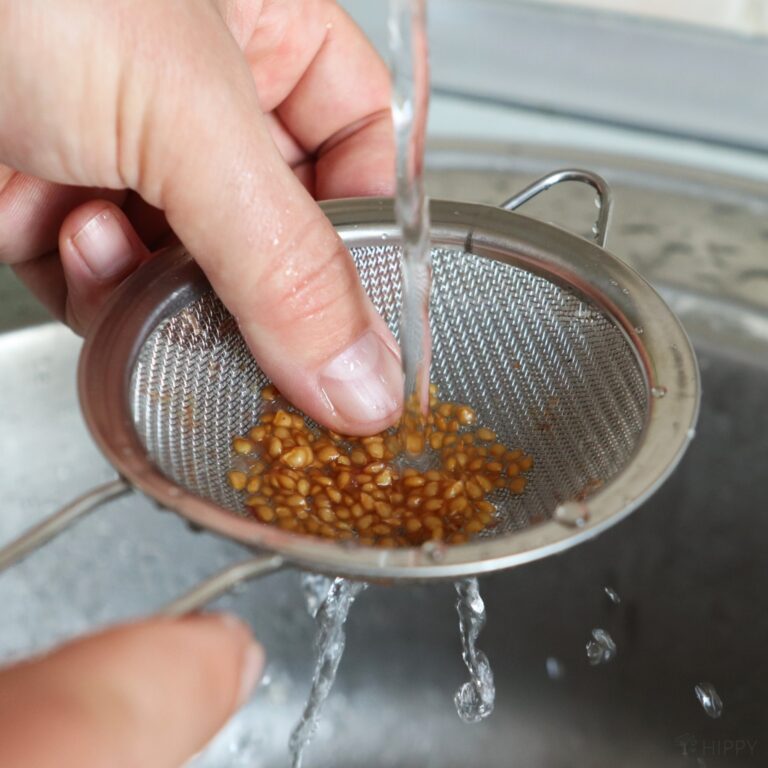
Other ways to get free seeds are to collect them from produce that you eat (farmer’s market’s produce may be a better choice for this than the grocery store) or let volunteer plants from last year’s garden grow.
Save Money on a Greenhouse: $450 and Up
If you really want to extend your growing season, you could purchase a small greenhouse for around $500 or more.
You might also be required to get builder’s permits and other variances to make sure your building is up to code.
However, in many places, you can build a long lasting, temporary structure called a hoop house for around $50 using repurposed materials, or you can build your own (larger) greenhouse for $200.
Because it is a temporary structure, you probably won’t need to invest in permits or inspections (check with your local township office to be sure). It is easy and will last several growing seasons.
Save Money on Water
If you don’t have a well, watering your garden could get pricey. Using a rain barrel or other water catchment system can save you hundreds of dollars in watering over the course of a growing season.
Of course, using mulch will help retain moisture and cut down on the need for watering, as well.
Save Money on Tools
Another pricey part of gardening is tools. Small tools, such as spades or trowels, can be purchased at Dollar Stores for, well, a dollar. But larger tools, such as shovels, garden forks, and yard carts can get very expensive.
You might find or start a tool lending ‘library’ in your neighborhood, borrow tools from friends (just be sure to return them!), find them on Craigslist or even yard sales.
If you must purchase tools, try to find high quality tools on sale so you get more bang for your buck.
Are You Ready to Save Some Money?
If you use all of these frugal gardening ideas, you can save around $2400 on setting up your garden, green house, and all your supplies for the year.
It will take a little time, a little networking, and some creativity, but you can have an extensive gardening infrastructure for very little cost.
And if you grow your garden well, your return can be thousands of dollars worth of vegetables to feed you and your family.
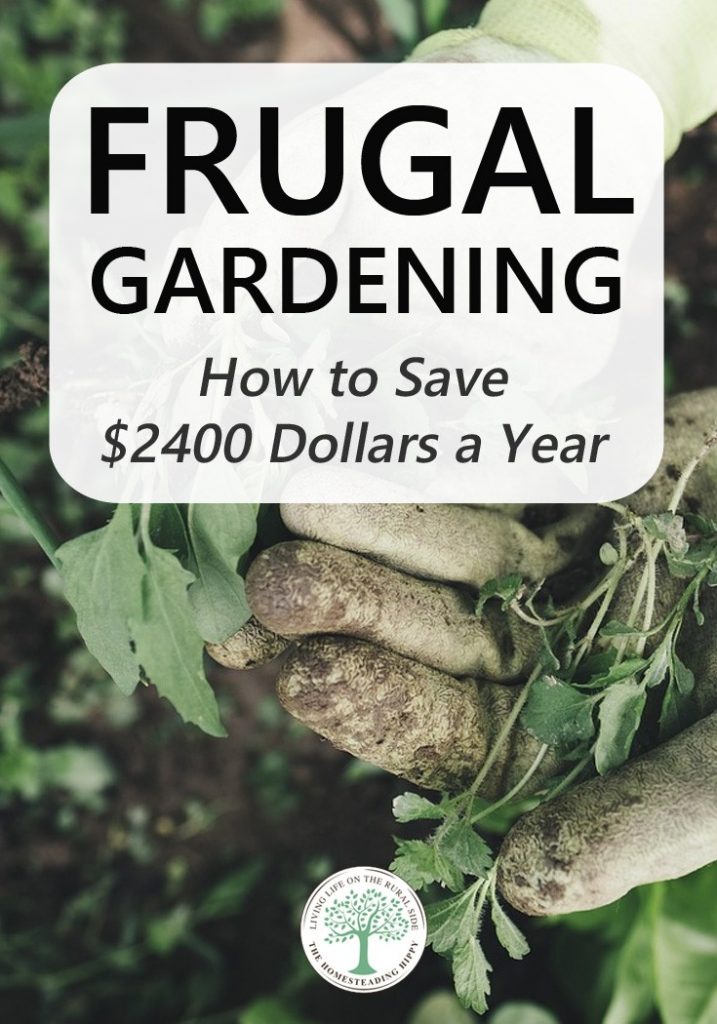
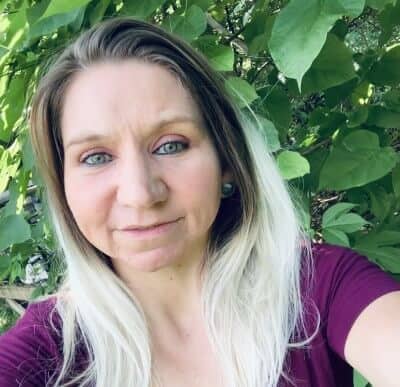
Amanda is a homesteader and a Jesus-loving, mother of 6 toddlers. She’s raising lots of fancy chickens and goats on her small homestead (among other things). Find out more about the team here.
